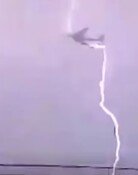Hinnamnor approaching, let’s prevent another nightmare
Hinnamnor approaching, let’s prevent another nightmare
Posted September. 03, 2022 07:41,
Updated September. 03, 2022 07:41

Ahead of the Chuseok holiday, a super strong typhoon, Hinnamnor, is unexpectedly approaching the southern parts of Korea, including South Gyeongsang Province and Busan, the Korea Meteorological Administration (KMA) said Friday. If the 11th typhoon heads west, it could hit the inland. When the strength of the typhoon reaches its peak on Monday and Tuesday, the entire peninsula including the Seoul metropolitan area including southern parts of Gyeonggi Province may come under its direct influence with heavy rain and strong wind.
Typhoon Hinnamnor and Typhoon Maemi of 2003, the worst typhoon in Korean history, share similarities in size, strength, and trajectory, raising concerns even more. Super typhoon Maemi arrived in Korea from the southeast of Taipei and destroyed the southeastern area in September near Chuseok holiday. One hundred and nineteen people were killed, 12 people went missing, and 4.22 trillion won worth of damages were inflicted because of Maemi.
According to the KMA, typhoon Hinnamnor is approaching Korea from the southeast of Taipei with a speed of 50 meters per second, which could become stronger than Maemi. It could destroy concrete buildings and blow people away. Due to climate change, sea surface temperatures of the sea of Taipei and the South Sea of Korea surged to more than 30 degrees Celsius. And this is highly likely to make the typhoon absorb the hot vapor and bring a historic water bomb. The KMA predicted that precipitation in the southern parts of Korea would be over 50~100 millimeters per hour and 500 millimeters in total early next week.
Recently, intense rainfall and severe flooding heavily affected Seoul, which has good drainage facilities compared to other areas. The southern parts of the peninsula where the typhoon can hit are vulnerable to natural disasters. In 2020, when three typhoons hit the area in a row, they suffered a lot of damage such as roofs being blown away and roads being flooded. Therefore, it is important to take care of areas that are vulnerable to flooding and collapse. As the entire nation could be directly influenced by Hinnamnor, the government should inspect relevant facilities such as drainage holes and manholes and be prepared with swift evacuation and emergency aid plans for disasters including landslides and floods.
Due to drought-induced poor produce yields in the nation’s southern areas, inflation is taking place ahead of the Chuseok holiday. Given that Hinnamnor could exacerbate the situation of farmers, it is important to swiftly come up with safety measures for produce and agricultural facilities for farmers. We can minimize the size of damages by elevating the disaster response system even though natural disasters are becoming more and more severe due to climate change.







